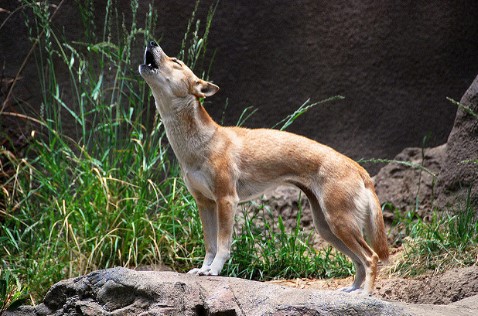The New Guinea Singing Dog is the rarest wild dog breed in the world . There are only about 200 singing dogs living in conservation centers or zoos in the United States. They are descendants of wild dogs captured in 1970, which have been severely inbred due to lack of new genes.
This breed of dog disappeared from its natural habitat within half a century, according to CNN .

By 2016, an expedition had found and studied 15 wild dogs in the remote highlands of western New Guinea, also known as Papua. A new expedition returned in 2018 to confirm whether these wild dogs were purebred singing dogs.
Comparisons of DNA taken from blood samples collected from the two dog populations showed that they had very similar genetic sequences and were more closely related to each other than to any other dog breed, according to research published in the journal PNAS.
Although their genomes are not identical, the team believes that the highland dogs are the wild New Guinea singing dogs. According to Elaine Ostrander, a researcher at the National Institutes of Health and lead author of the study, the wild highland dogs are 70% genetically identical to the captive population. The differences between them are the result of inbreeding.
New Guinea is the second largest island in the world. The eastern half is Papua New Guinea, the western half is part of Indonesia - called Papua.

The singing dog was first described after researchers found an individual at an altitude of about 2,100 m in the Central Province of Papua New Guinea in 1897.
Despite numerous anecdotes and unverified photographs in recent years, many experts fear the New Guinea highland wild dog has become extinct due to habitat loss and interbreeding with village dogs.
However, they were rediscovered in 2016 near the Grasberg gold and copper mine in Papua, where ecological protection measures around the mine have created a sanctuary that allows wild singing dogs to thrive.
The expedition leader who found them was James McIntyre, a field researcher and founder of the New Guinea Highland Wild Dog Foundation.
Two years later, McIntyre’s team returned to collect blood, hair, tissue and saliva samples despite harsh weather and rugged terrain. They also measured the dogs’ size, weight, age, health and body condition. The team also fitted two dogs with GPS collars to study their travel habits and territories.
According to the San Diego Zoo, the singing dog's joints and spine are extremely flexible, allowing it to climb and jump like a cat. The zoo says ultrasound images show the dog's unique howl is similar to that of a humpback whale.
"The New Guinea singing dog is very rare, it has a beautiful harmonious voice that cannot be found anywhere else in the wild. So it's not good to lose this species. We don't want that," said researcher Ostrander.
Minh Hoa (t/h)
Source: https://giadinh.suckhoedoisong.vn/loai-vat-quy-hiem-bac-nhat-hanh-tinh-bat-ngo-tai-xuat-sau-50-nam-tuyet-tich-172241001072501968.htm








![[Video] Warning about a series of clinics impersonating Bach Mai Hospital](https://vphoto.vietnam.vn/thumb/1200x675/vietnam/resource/IMAGE/2025/7/23/e2e33e764470492584bcdf25e3feb09b)





















![[Infographic] Vietnam-Senegal traditional friendship](https://vphoto.vietnam.vn/thumb/1200x675/vietnam/resource/IMAGE/2025/7/23/4c96a604979345adb452af1d439d457b)










































































Comment (0)